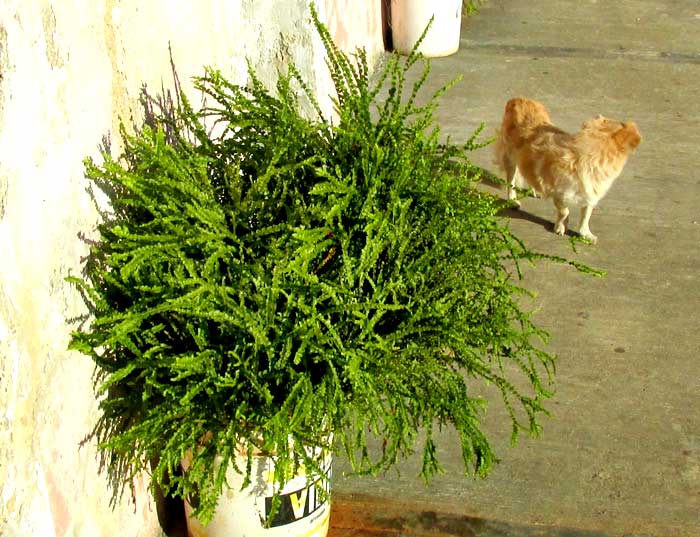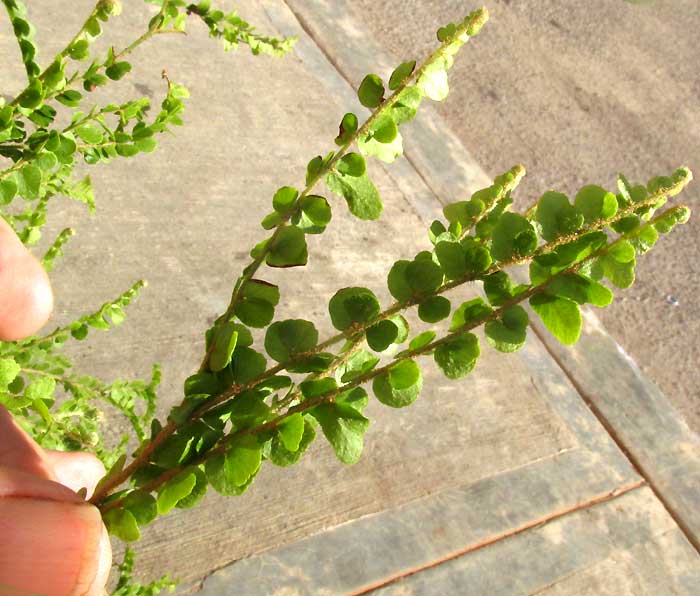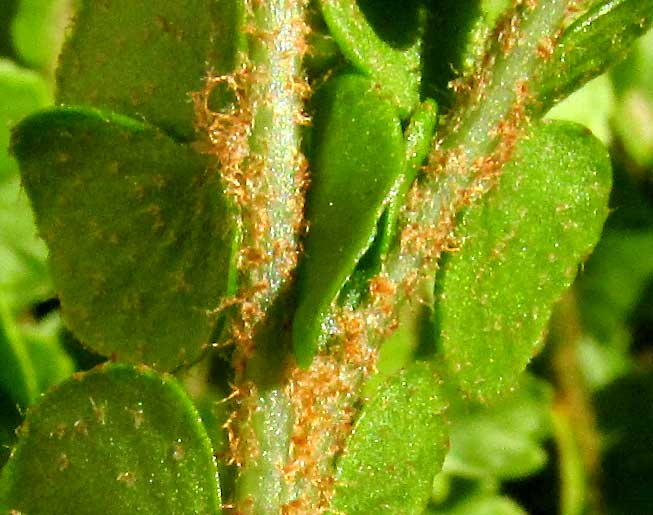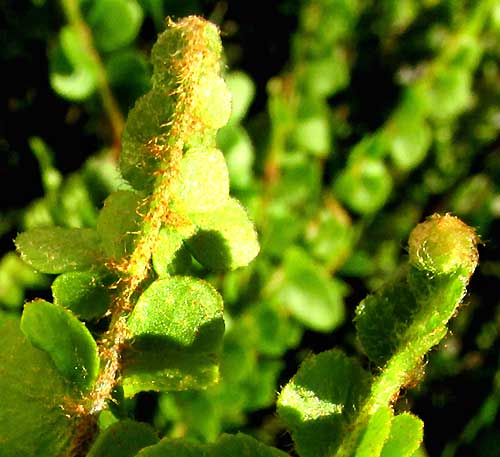Excerpts from Jim Conrad's
Naturalist Newsletter
Issued on December 30, 2019, from the forest just west of Tepakán; elev. ~9m (~30 ft), N21.053°, W89.052°; north-central Yucatán state, MÉXICO
PIGMY SWORDFERN
In Tepakán my tortilla lady spruced things up for Christmas by placing three potted ferns outside her door, one of them shown below:

Close-up they hardly seemed like ferns at all, as you can see below:

The fronds' midribs, or rachises, are branched, which normally fern rachises don't do. Also, it's unusual for a frond's leaflets, or pinnae, to be roundish like these. You can see a branching, hairy rachis up closer below:

However, the plants were definitely ferns, as confirmed below:

The ferns' emerging fronds' tips are rolled coilwise from the top downward, and unroll in the manner of those party favors that when you blow into them they uncoil and maybe squeak. Rolled immature fern fronds are said to be "circinate," and ferns fronds uncoil like this.
Here we have the Pigmy Swordfern, sometimes also known as the Little-leaved Swordfern, Fishbone Fern and Lemon Button Fern. It's NEPHROLEPIS CORDIFOLIA "DUFFII," Nephrolepis cordifolia being a commonly cultivated ornamental fern worldwide in the tropics and subtropics, and often escaped in wet, shady places, especially disturbed weedy spots. Its native land is unknown, though my old Bailey's Manual of Cultivated Plants says that it's supposed to have come from New Zealand or the South Sea Islands, and is named after a Mr. Duff of the Sidney Botanic Garden. Bailey also supposes that it's a sterile mutant of Nephrolepis cordifolia. Certainly this "duffii" cultivar has a radically different appearance from regular Nephrolepis cordifolia plants. I couldn't find a single pinna bearing spore-producing sori.
I need to tell my tortilla lady that she'll probably need to move her plants out of such strong sunlight, for they need partial shade. In fact, some of the fronds already were turning brown.
The genus Nephrolepis is well known for producing amazing mutations and other altered forms. You might remember the Fishtail Swordferns we had back at Hacienda Chichen.